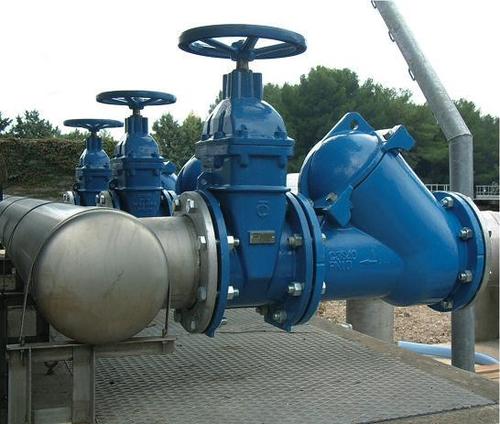The Problems in the Use of Fluorine Lined Butterfly Valves

Fluorine lined butterfly valve has been widely used in devices contacting with acid and alkali of strong corrosive medium in the petroleum, chemical industry, medicine, metallurgy, electric power industries, but how to choose the right and appropriate use fluorine lined butterfly valves, according to our application experience for many years. When choosing a fluorine-lined butterfly valve, the following points for attention are put forward for the using conditions of medium temperature, pressure, differential pressure, etc.
1. As the multi-layer soft and hard stack sealing ring is fixed to the valve plate when the valve plate is in an always-open status, the medium has a frontal brush on its sealing surface. After the soft sealing in the metal sheet is brushed and eroded, the sealing performance is directly affected.
2. Limited by the structural conditions, this structure is not suited to be made into valves that have a diameter less than DN200, because the overall structure of the valve plate is too thick and the flow resistance is too big.
3. Due to the mechanism of the rubber-lined sanitary butterfly valve, the sealing between the sealing surface of the valve plate and the valve seat is determined by the torque of the transmission device. In the positive flow state, for tube pinch valve, fluorine lined valve, exhaust valve, the higher the pressure of the medium is, the tighter the sealing squeezes. When the medium backflows, with the pressure of the medium increases, the unit positive pressure between the valve plate and the valve seat is smaller than the pressure intensity, resulting in the sealing beginning to leak.
4. High-performance fluorine-lined butterfly valve is characterized by the fact that the valve seat sealing ring is composed of a plurality of stainless steel sheets on both sides of a flexible T-shaped sealing ring.
The sealing surface of the valve plate and the valve seat is an oblique conical structure, and temperature and corrosion resistant alloy material is welded on the surface of the oblique conical structure. This structure effectively compensates the elastic deformation between the sleeve and the valve body, solves the sealing problem of the valve in the process of the two-way interchangeable medium transportation.
Using soft T-shaped multi-layer stainless steel sheets on both sides of the sealing ring has the dual advantages of metal hard sealing and soft sealing. Whether in low temperature or high-temperature conditions, both have a sealing performance of zero leakage.
Experiments suggest that in positive flow status, the pressure of the sealing surface is caused by the torque of the transmission and the effect of the medium pressure on the valve plate. When the positive medium pressure increases, the tighter the squeeze between the oblique conical surface of the valve plate and the sealing surface of the valve seat, the better the sealing effect.
When the medium backflows, the sealing between the sealing surface of the valve plate and the valve seat is determined by the torque of the transmission device. With the increase in the reverse medium pressure, the unit positive pressure between the valve plate and the valve seat is smaller than the pressure intensity.
Therefore, the utility model does not install the soft and hard multi-layer sealing ring on the valve plate as in current technologies. Rather, it is directly installed on the valve body. Adding an adjustment ring between the valve plate and the valve seat is very ideal for two-way hard sealing.




